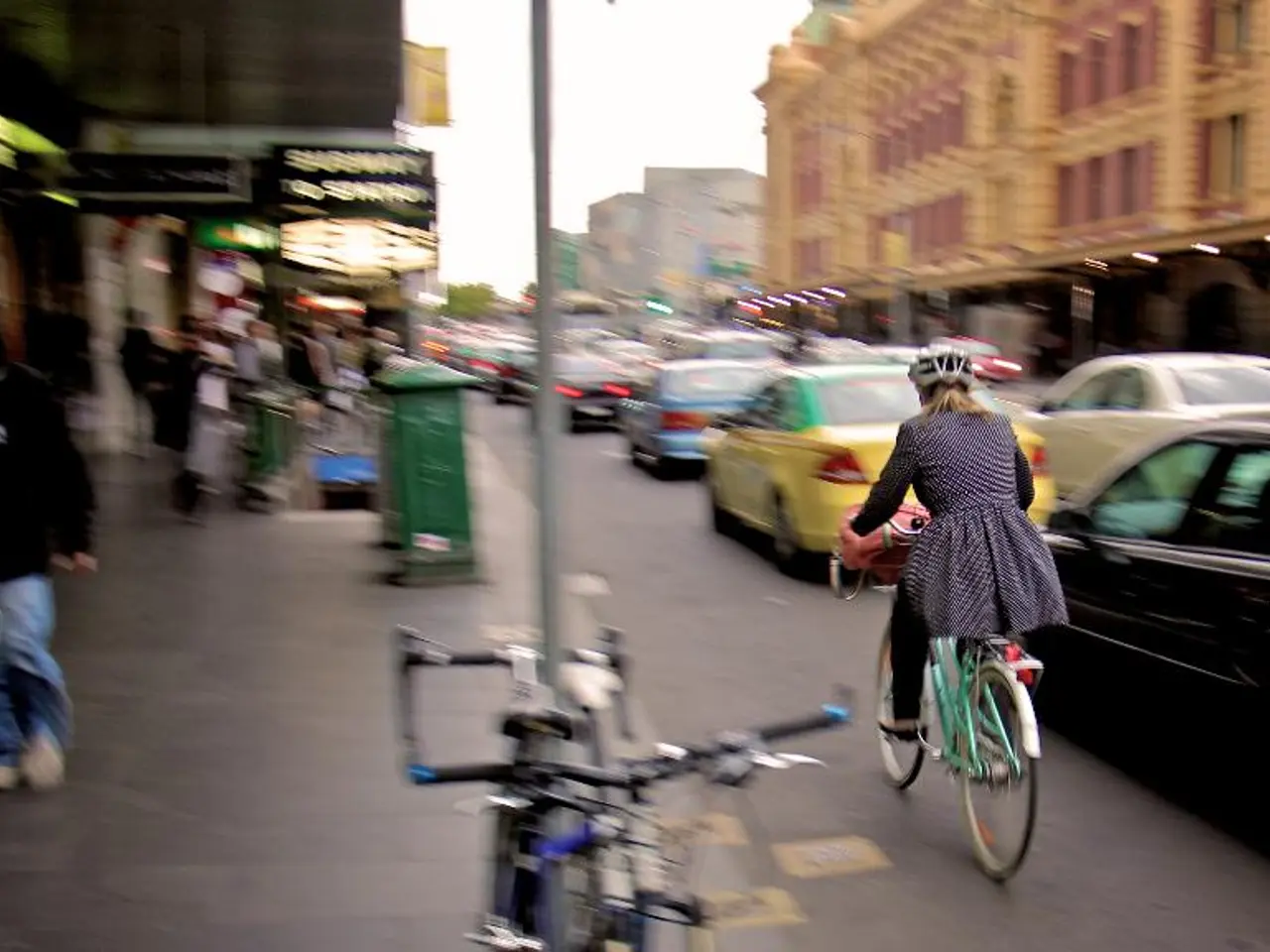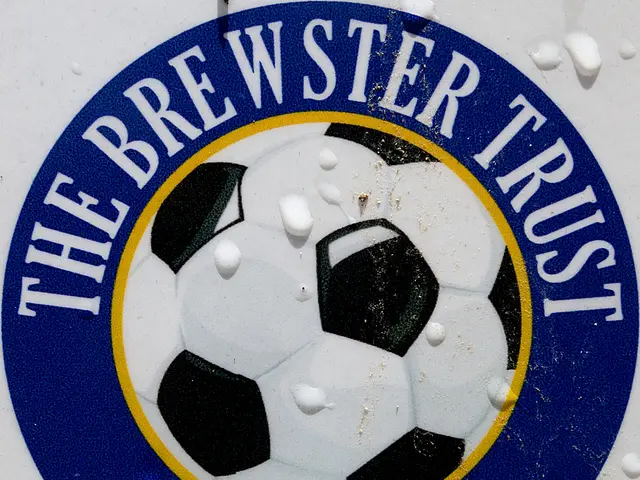Prioritizing Children's Needs: Cities That Suit Kids Also Benefit the Entire Population, According to CityChanger Clare Rogers
In the heart of London's borough of Enfield, Clare Rogers, a passionate advocate for reclaiming streets, has been making a significant impact. As a mother of two, Clare lives in one of Enfield's Low Traffic Neighborhoods (LTNs), which began a 6-month trial in October 2020.
Clare's journey began when she experienced a 'lightbulb moment' seeing smog hanging over the city skyline, leading her to buy a tandem bike and eventually stop driving her car. Her passion for making streets safer for walking, cycling, and play has led her to organise Enfield's first 'play streets' for children, co-found Better Streets for Enfield, and now work as a Healthy Streets campaigner.
Clare believes that the key to successful street reclamation projects lies in establishing a working relationship with decision-makers and politicians. She suggests taking them on bike rides or walks through areas with LTNs to help them understand the benefits. Clare also highlights the usefulness of opinion polls in convincing politicians to support LTNs, as they show strong public support for such initiatives.
One of Clare's most significant achievements was securing £30 million in funding for Clare's borough in 2014 as part of the mayor's Healthy Streets for London approach. This funding has been instrumental in implementing traffic calming measures, increasing pedestrian and cycling infrastructure, and transforming neighbourhoods into more livable spaces, reminiscent of Dutch-style "Mini Hollands."
Clare emphasizes the importance of removing the 'cyclist vs motorist' mindset for successful campaigns for better streets. She points out that car drivers tend to consider cyclists as "less than human" due to the stereotype of cyclists as "men in Lycra shorts." Clare questions the prioritization of car journeys over children's right to play in their own streets.
As Low Traffic Neighborhoods become more popular, Clare suggests that people will have their eyes opened to how they actually work. She encourages readers to check out Better Streets for Enfield, the Enfield Cycling Campaign, and her personal blog for more information about her work. Clare expresses optimism that now could be the turning point for changing attitudes towards driving and cycling.
Looking to the future, Clare draws parallels between the current situation in London and the Netherlands in the 70s, suggesting that London could reach the same level as the Dutch in terms of attitudes towards driving and cycling infrastructure. With her tireless advocacy, Clare Rogers continues to inspire change and create a safer, more accessible environment for all in Enfield, London.
- Clare Rogers, an advocate for reclaiming streets in London, shares a connection with environmental-science, promoting health-and-wellness through fitness-and-exercise, such as cycling, in her work.
- In the realm of policy-and-legislation and politics, Clare believes that collaboration with decision-makers and politicians is crucial for implementing sustainable-living initiatives like Low Traffic Neighborhoods (LTNs).
- As the climate-change discourse expands, the impact of general-news stories about successful LTN projects, like those in Enfield, could influence public opinion and lend support to such environmental-science oriented policy changes.
- Amidst the evolution of lifestyle choices related to home-and-garden and environmental-science, Clare's work on creating more livable spaces through traffic calming measures and increased pedestrian and cycling infrastructure aligns with broader trends towards sustainable living.
- While faced with resistance from some in the polices-and-legislation arena, Clare notes the importance of challenging common stereotypes, such as the 'cyclist vs motorist' mindset, to create a more equitable and livable environment for all.








